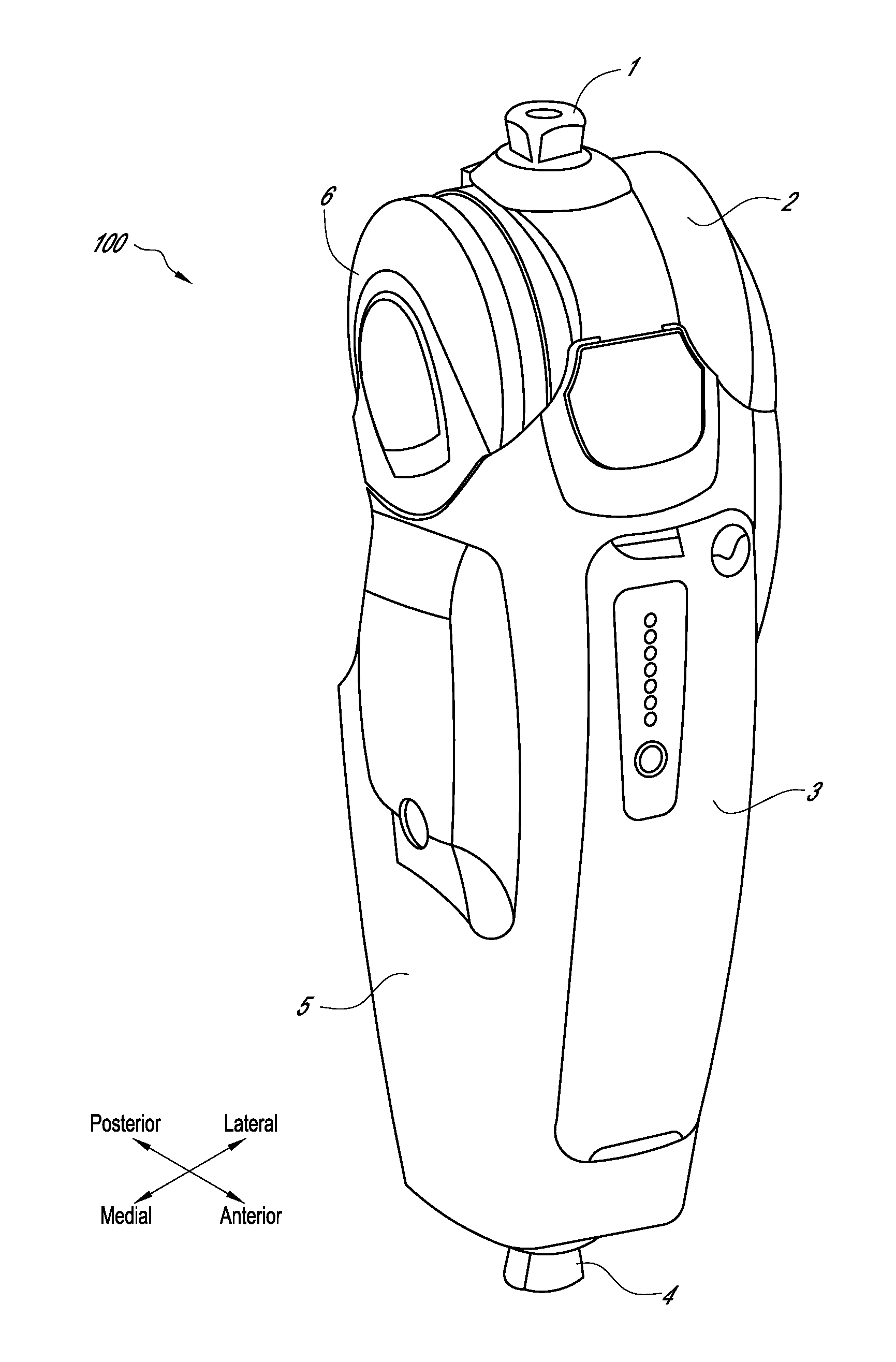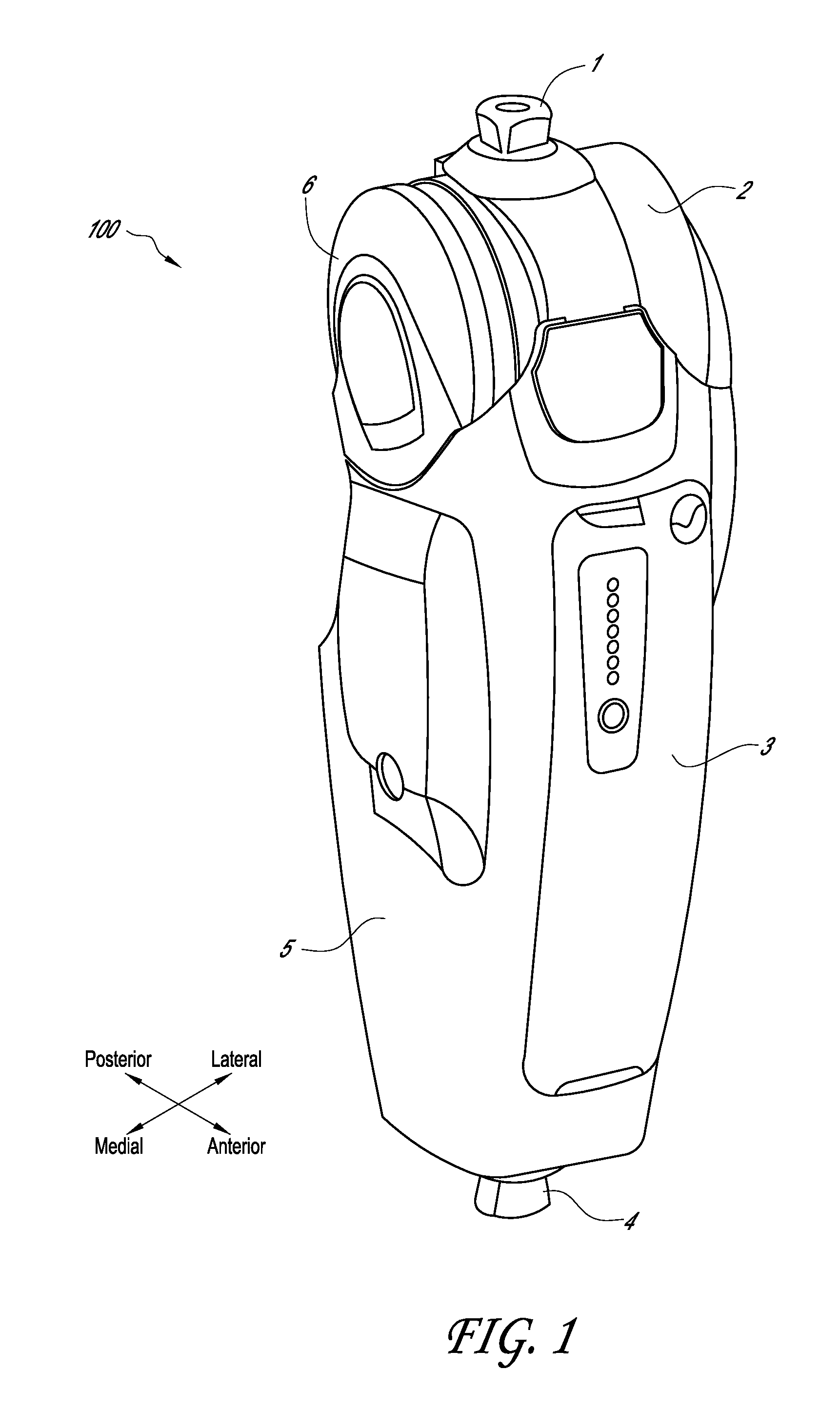Ground contact sensing systems and methods for lower-limb orthotic and prosthetic devices
a technology of prosthetic devices and ground contact, applied in the field of system and method for sensing ground contact of prosthetic and/or orthotic devices, can solve the problems of reducing the sensitivity of inertial torque loading, affecting the performance of the device, and affecting the quality of the device, etc., and achieves the effect of reducing the sensitivity to inertial torque loading
- Summary
- Abstract
- Description
- Claims
- Application Information
AI Technical Summary
Benefits of technology
Problems solved by technology
Method used
Image
Examples
Embodiment Construction
[0039]Certain embodiments described herein relate to a computer controlled lower-limb prosthesis, whether or not it is actuated, motorized, or fully passive. Further embodiments can also be used in other contexts, such as for certain types of lower-limb orthotic devices.
[0040]FIG. 1 illustrates one embodiment of a motorized lower-limb prosthesis 100 that can be integrated with the ground contact sensing systems described herein. It is to be noted that this specific embodiment is provided as an example and the scope of the inventions herein described apply to other embodiments, such as prosthetic feet, lower limb orthotics, sensors for non-prosthetic or orthotic use, and other devices.
[0041]The motorized lower-limb prosthesis 100 of depicted in FIG. 1 implements a knee joint and is typically connected to the user's residual limb through a socket (not shown) via the proximal end male pyramid connector 1 present on its proximal extremity. The proximal male pyramid connector 1 is secure...
PUM
 Login to View More
Login to View More Abstract
Description
Claims
Application Information
 Login to View More
Login to View More - R&D
- Intellectual Property
- Life Sciences
- Materials
- Tech Scout
- Unparalleled Data Quality
- Higher Quality Content
- 60% Fewer Hallucinations
Browse by: Latest US Patents, China's latest patents, Technical Efficacy Thesaurus, Application Domain, Technology Topic, Popular Technical Reports.
© 2025 PatSnap. All rights reserved.Legal|Privacy policy|Modern Slavery Act Transparency Statement|Sitemap|About US| Contact US: help@patsnap.com



